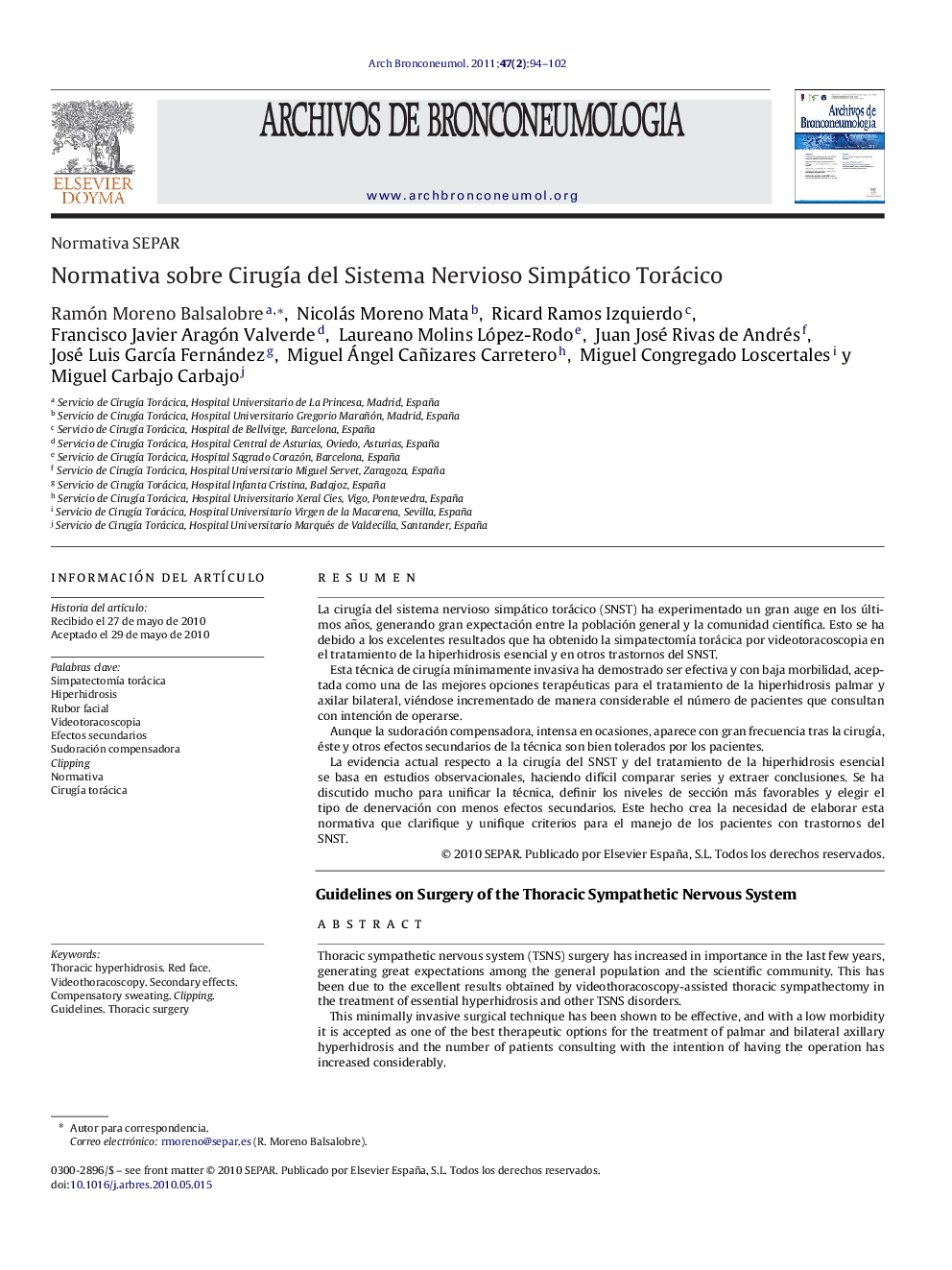| Article ID | Journal | Published Year | Pages | File Type |
|---|---|---|---|---|
| 4203584 | Archivos de Bronconeumología | 2011 | 9 Pages |
ResumenLa cirugía del sistema nervioso simpático torácico (SNST) ha experimentado un gran auge en los últimos años, generando gran expectación entre la población general y la comunidad científica. Esto se ha debido a los excelentes resultados que ha obtenido la simpatectomía torácica por videotoracoscopia en el tratamiento de la hiperhidrosis esencial y en otros trastornos del SNST.Esta técnica de cirugía mínimamente invasiva ha demostrado ser efectiva y con baja morbilidad, aceptada como una de las mejores opciones terapéuticas para el tratamiento de la hiperhidrosis palmar y axilar bilateral, viéndose incrementado de manera considerable el número de pacientes que consultan con intención de operarse.Aunque la sudoración compensadora, intensa en ocasiones, aparece con gran frecuencia tras la cirugía, éste y otros efectos secundarios de la técnica son bien tolerados por los pacientes.La evidencia actual respecto a la cirugía del SNST y del tratamiento de la hiperhidrosis esencial se basa en estudios observacionales, haciendo difícil comparar series y extraer conclusiones. Se ha discutido mucho para unificar la técnica, definir los niveles de sección más favorables y elegir el tipo de denervación con menos efectos secundarios. Este hecho crea la necesidad de elaborar esta normativa que clarifique y unifique criterios para el manejo de los pacientes con trastornos del SNST.
Thoracic sympathetic nervous system (TSNS) surgery has increased in importance in the last few years, generating great expectations among the general population and the scientific community. This has been due to the excellent results obtained by videothoracoscopy-assisted thoracic sympathectomy in the treatment of essential hyperhidrosis and other TSNS disorders.This minimally invasive surgical technique has been shown to be effective, and with a low morbidity it is accepted as one of the best therapeutic options for the treatment of palmar and bilateral axillary hyperhidrosis and the number of patients consulting with the intention of having the operation has increased considerably.Although compensatory sweating, which is occasionally intense, often occurs after the surgery, this and other secondary effects of the technique are well tolerated by patients.The current evidence on TSNS and the treatment of essential hyperhidrosis is based on observational studies, making it difficult to compare series and draw conclusions. There has been much discussion on standardising the technique, defining the most favourable levels for clipping, and choosing the type of denervation with least secondary effects. This has led to the need to draw up these guidelines which should clarify and standardise the criteria for managing patients with disorders of TSNS.
